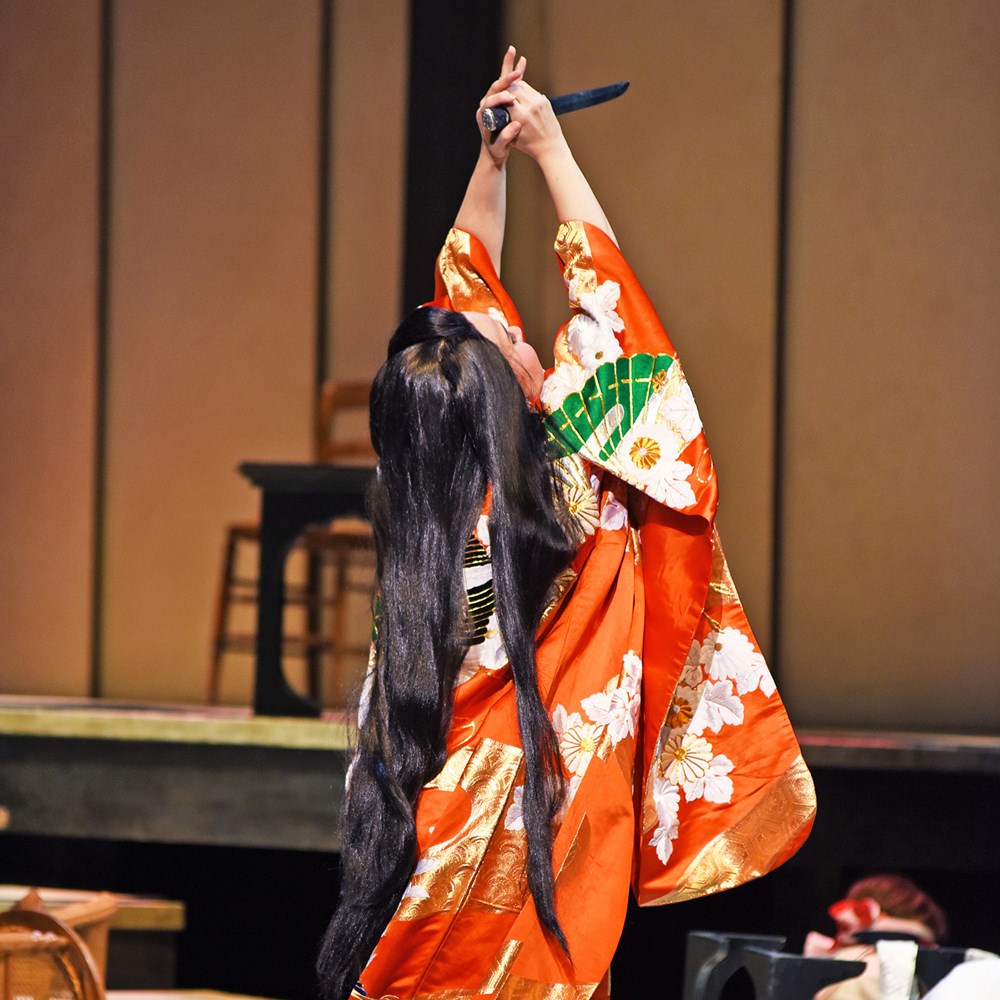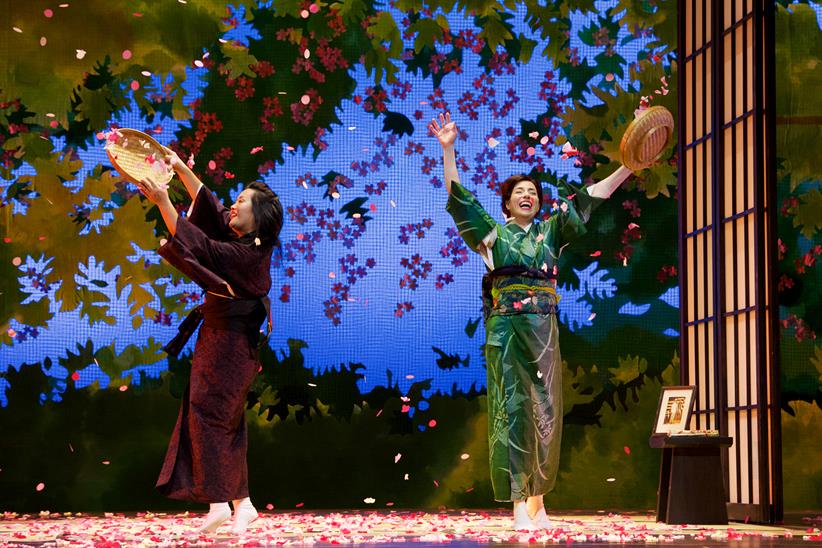The Butterfly Conundrum

The Mikado brought the issue to the fore. The Seattle Gilbert & Sullivan Society’s 2014 presentation of the classic operetta prompted an incendiary editorial from the Seattle Times columnist Sharon Pian Chan. “It’s yellowface, in your face,” she wrote. The ensuing firestorm focused not only on the entirely non-Asian cast, but also on The Mikado itself as an example of cultural appropriation, even racism.
Seattle Opera, planning its August 2017 production of Madama Butterfly, took pains to avoid setting off a similar uproar. Puccini’s opera is absolutely central to the repertory: number two on OPERA America’s 2016–2017 list of most-performed operas (see page 22). But it depicts its heroine from a distinctly Western perspective; in the process, many feel, presenting a stereotyped image of Japanese culture. Adding to the controversy is the casting of the title role, which often falls to a Caucasian performer and has traditionally been performed in “yellowface”: a makeup scheme intended to make white actors look Asian, now often considered as offensive as blackface.
In order to address the sensitive issues that the upcoming production raised, Seattle Opera undertook a series of initiatives to draw the city’s Asian-American community into the conversation. It presented “Reversing the Madame Butterfly Effect,” an evening of short plays by female Asian-American writers. Lobby displays focusing on World War II’s Japanese-American concentration camps brought a fresh perspective to Butterfly itself, while linking the Puccini work to the September production of An American Dream, the Jack Perla/Jessica Murphy Moo work addressing the same topic. A panel discussion, “Asian Arts Leaders Respond to Madame Butterfly,” brought lively, sometimes harsh insights into the topic: The artist Jenny Ku, aka The Shanghai Pearl, called Butterfly a “for-white-people- by-white-people story.”
“We decided not to be afraid of what people had to say about yellowface and cultural appropriation,” says Gabrielle Nomura Gainor, the company’s media relations manager. “We gained credibility with the community because we were willing to be vulnerable and listen, not just be ‘the opera’ and assert our power. The point wasn’t that people have to boycott Puccini, but we wanted them to think a little more.”
“Discussions like these are a good sign that our culture is becoming woke,” says Washington Post critic Anne Midgette, who wrote of Butterfly’s racial issues in connection with Washington National Opera’s production last season. “Gender roles and racial roles can’t be overlooked. They become part of the cultural dialogue, in rocky, bumpy ways that get people all hot and bothered. Opera is trying so hard to be hip and reach a younger audience of non-opera-lovers. But you can’t have it both ways: You have to be prepared for these responses.”

One of the participants in Seattle’s panel of arts leaders was director Matthew Ozawa, an American of Japanese and white heritage who staged his own Butterfly production for Arizona Opera last winter, bringing to the task a long and complicated intellectual engagement with the work. “At one time I thought the piece was inherently offensive,” he says. “I had my misgivings about doing it, but I found that the opera itself is brilliant. I don’t think that anyone is viewed kindly in the piece. Butterfly is stuck in the middle of these different cultures.”
The problems many Butterfly productions raise, Ozawa feels, are less intrinsic to the work than to the directorial approach. “So often the singers are instructed to use their hands and to bow in ways that are inauthentic to Japanese culture,” he says. “The director will say, ‘I traveled to Japan and witnessed these moves in a tea ceremony.’ But that doesn’t mean you should use them! The degrees by which people bow — the timings and the hierarchy — are so difficult that even Japanese people have trouble dealing with it.” Ozawa had his Butterfly, sometimes clothed in Western garb, eschewing standard “Japanese” gestures. “This is a woman who has basically rejected her culture, who’s trying to be white — to be Western,” he says.
Opera Theatre of Saint Louis has a history of addressing the cultural sensitivities of its projects — most notably in 2011, when it forged ties to the local Jewish and Arab-American communities in anticipation of its production of The Death of Klinghoffer. For Butterfly, the company invited Chikako Usui, president of the local Japan America Society, to talk about the opera’s historical and cultural context. “She packed in a huge amount of perspective,” says Timothy O’Leary, OTSL’s general director. “She showed how Butterfly is very much a Western opera, with a Western conception of Japanese culture. Some of its elements have real authenticity and others don’t. But I was surprised to find out how much that I assumed was inaccurate really wasn’t.”
Robin Guarino, the production’s director, brought in as dramaturg a University of Cincinnati colleague, theater professor Christine Mok. “She helped make sure that Robin and her team avoided tropes that would be considered stereotyping, and therefore a kind of appropriation,” O’Leary says. The stylized set design, according to O’Leary, “acknowledged that it’s not set in a historical, literal Japan, but a theater of the imagination.” The production’s Cio-Cio-San was Rena Harms, who is Caucasian, but people of a variety of races and ethnicities took many of the smaller roles.
“The main thing for us to focus on is diversity as a whole,” says O’Leary. “In a production of Butterfly, no one may quite be depicting someone of their own ethnicity, and that can be okay.
We’re dealing with an art form that is about suspension of disbelief. But it depends on having diversity in casting throughout the season — which is possible to do, and a benefit artistically. When you have diversity on stage, audiences see a 21st-century production, one that resonates with the culture we live in.”
This article was published in the Winter 2018 issue of Opera America Magazine.

Fred Cohn
Fred Cohn is the former editor of Opera America Magazine.




